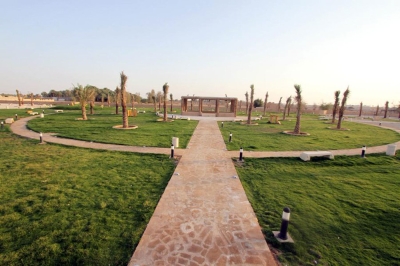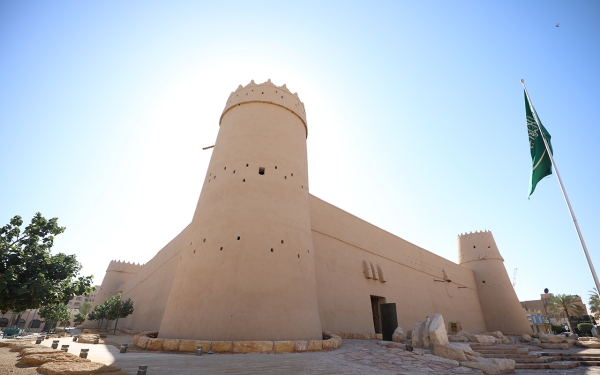
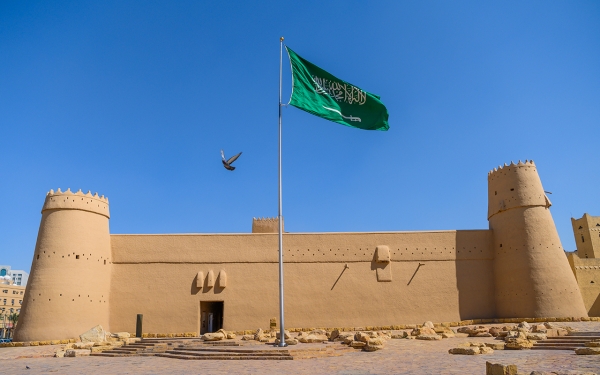
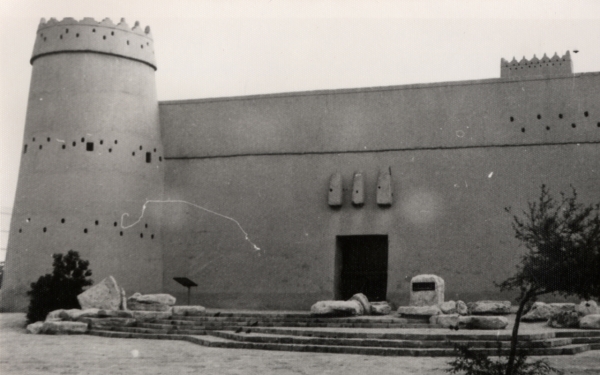
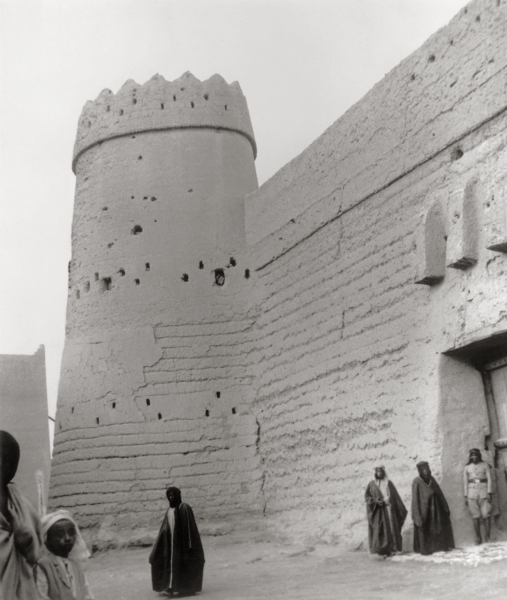
Al-Masmak Palace is a national cultural landmark and a historical icon that defines the city of Riyadh, Kingdom of Saudi Arabia. It was an ancient fortress before becoming a museum showcasing the stages of the Kingdom's founding in the heart of the Saudi capital. It is associated with the most important event in the Kingdom’s history as it is the gateway through which Founding King Abdulaziz Bin Abdulrahman Al Saud entered when he recaptured Riyadh City in 1902. This event set the stage for the establishment of the modern Saudi State and the unification of the rest of the Kingdom.
Its name is derived from al-Masmak, which is used to denote the thickness of the palace's construction and the robustness of its walls. It was initially used as a military garrison. After King Abdulaziz arrived in the city, it became a warehouse for weapons and ammunition for two years, until it was transformed into a historical museum that was restored and rehabilitated for the first time by Riyadh Municipality in 1980. Subsequently, the palace was entrusted to the General Department of Antiquities and Museums at the time and was opened in 1996.
Shape of al-Masmak Palace
Al-Masmak Palace extends over 3,885 m in al-Thumairi Neighborhood in the middle of Riyadh. It was built of mud mixed with hay, and its foundations were made of stone. Clay was used to plaster the exterior walls and gypsum for the interior ones.
The palace presents itself to observers as a semi-quadrilateral castle, featuring a door measuring three m in length and two m in width, made from tamarisk and palm wood. Positioned at each of the four corners are cylindrical watchtowers soaring to a height of eighteen m. Encircling al-Masmak is an outer wall, boasting a thickness of up to two m. Within these confines, an additional tower known as al-Murabba rises, overseeing the palace from the inside.
Components of al-Masmak Palace
Al-Masmak Palace is structured with two floors, each divided into two sections, totaling approximately forty-four rooms. The lower floor encompasses six courtyards, enveloped by both lower and upper chambers, and boasts two entrances. Additionally, this floor features two lounge areas (majlis), a mosque, and a water well. Moreover, it houses three residential suites and a service center. The first suite served as living quarters for the governor, the second as a treasury, and the final one was designated for accommodating guests. The first floor contains a roshan, a majlis, and several rooms overlooking the main courtyard.
The walls of al-Masmak Palace are decorated with triangular and rectangular openings. Moreover, the walls of the internal rooms are engraved with triangular and circular plaster decorations and simple drawings inspired by the elements of the surrounding environment, such as palms, stars, and crescents. The exterior walls are characterized by protrusions called tarmat, which are wooden, box-like openings used for surveillance.
Historical significance of al-Masmak Palace
Al-Masmak Palace is entrenched in Saudi memory because of its connection with the Battle of Riyadh, in which King Abdulaziz recaptured the city from Ibn Rashid, the ruler of the emirate of Hail. Moreover, the battle resulted in the killing of Ibn Ajlan, chief of Riyadh assigned by Ibn Rashid. Thirty years after King Abdulaziz entered al-Masmak Palace, he announced the Kingdom's unification in 1932.
Rehabilitation of al-Masmak Palace
The palace was redeveloped recently by the Saudi Commission for Tourism and Antiquities (currently the Heritage Commission). It contains seventeen exhibition halls, featuring photographs, drawings, maps, miniatures, and film materials documenting the unification of the Kingdom, starting with the entry of the palace, its history, the events of Riyadh's recapturing and its transformations, and the history of the pioneers who entered it with King Abdulaziz. Al-Masmak Palace Museum is open to visitors six days a week, both in the morning and in the evening. The museum also hosts official state events and ceremonies during religious and national holiday seasons.
Related quizzes
Related articles


